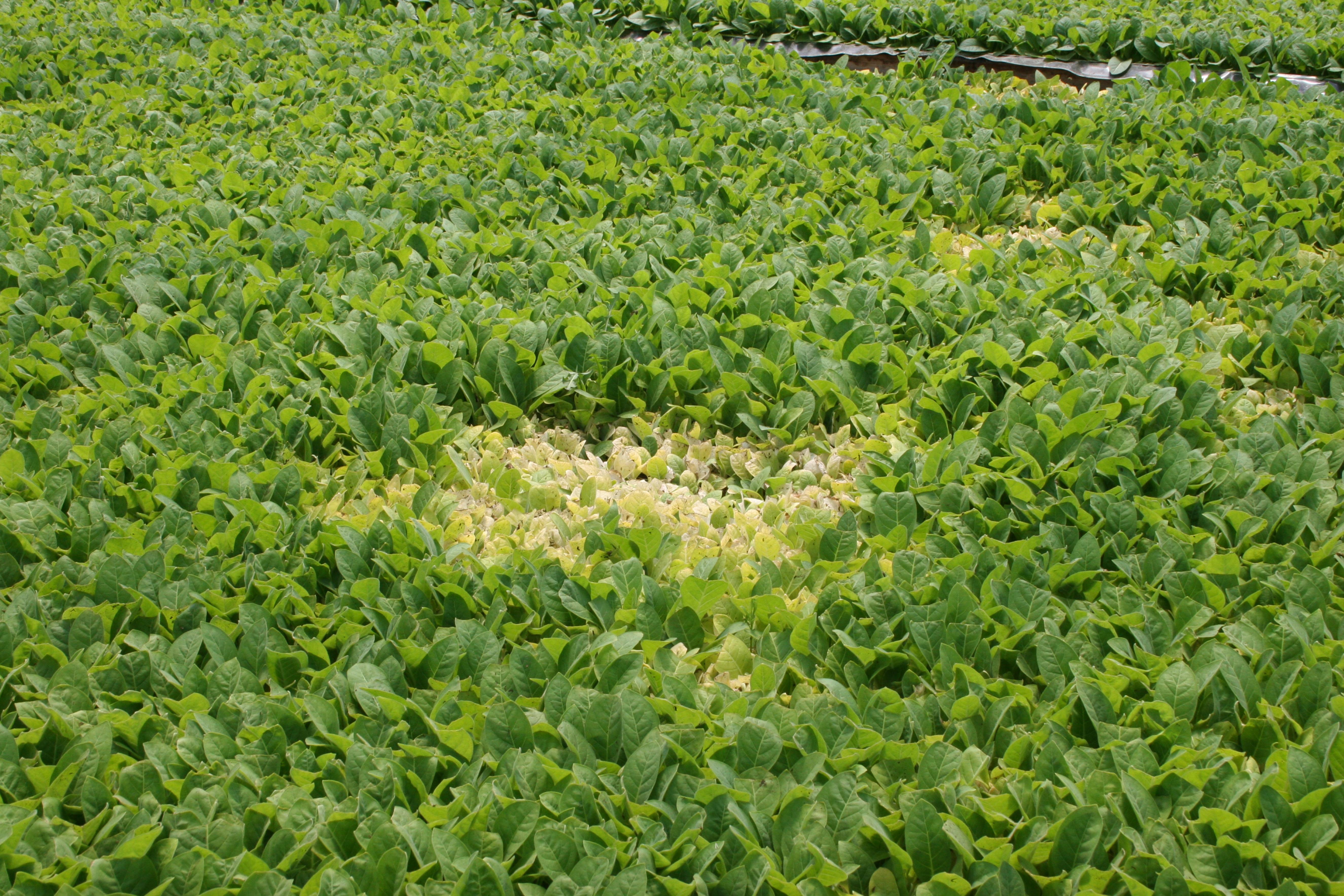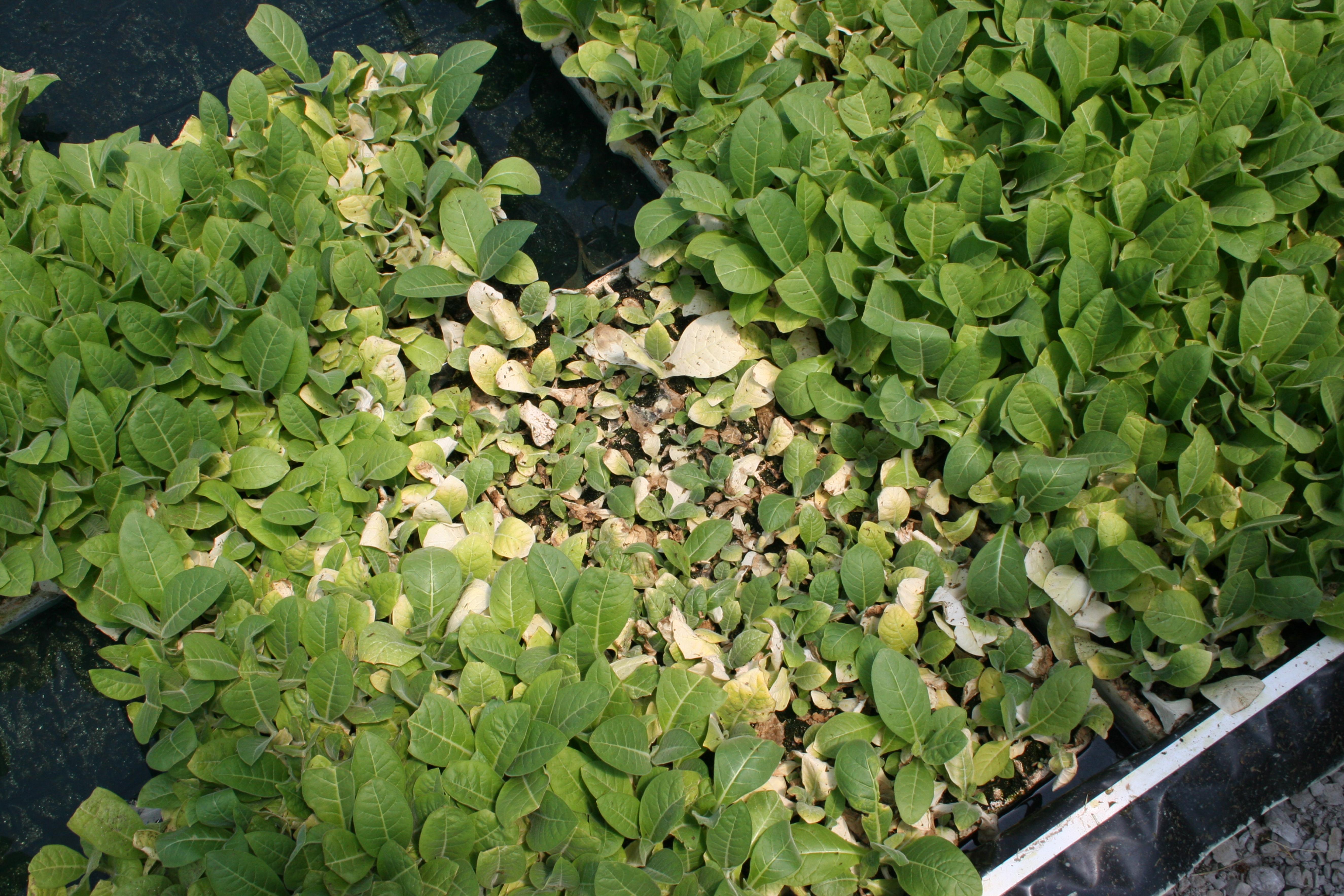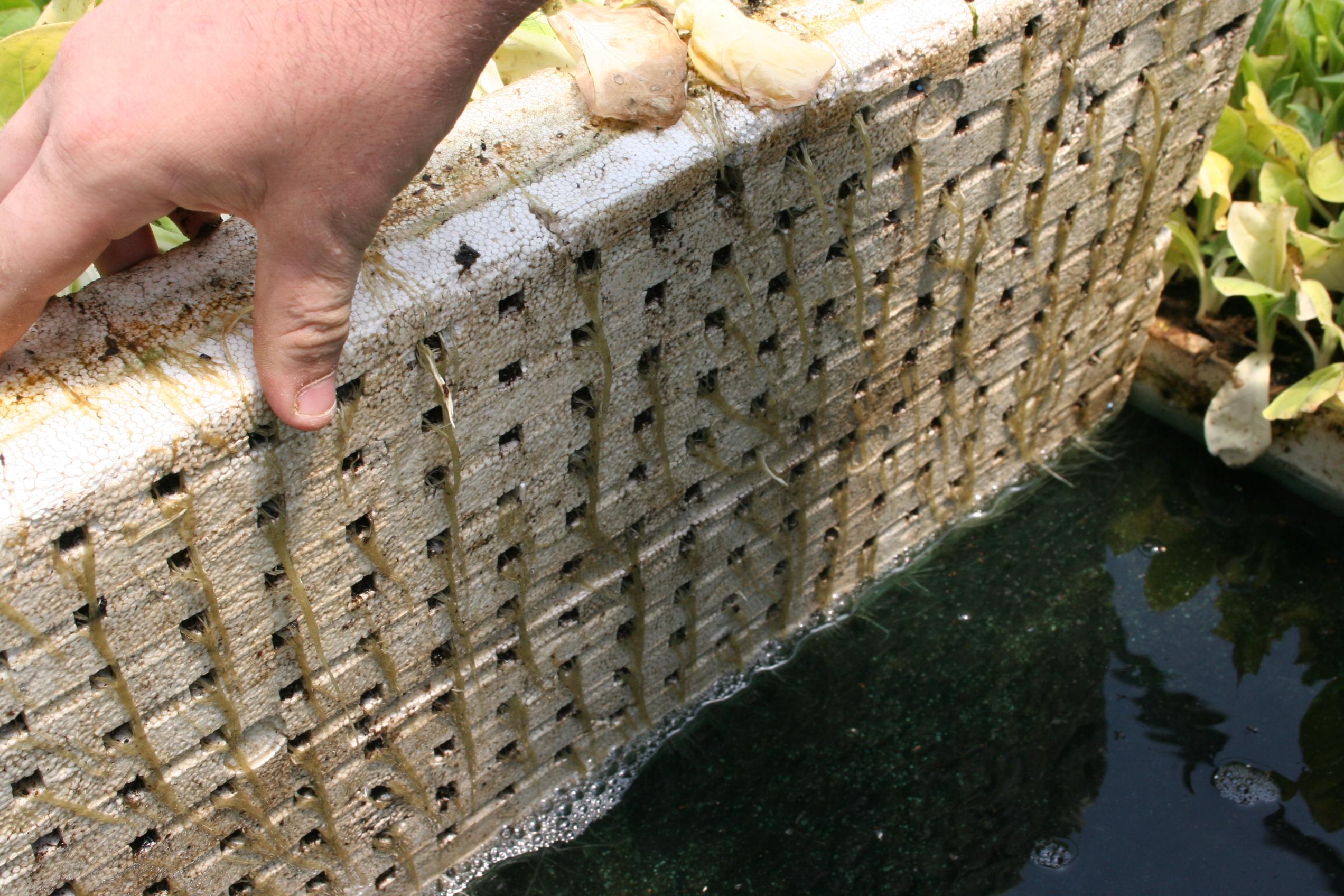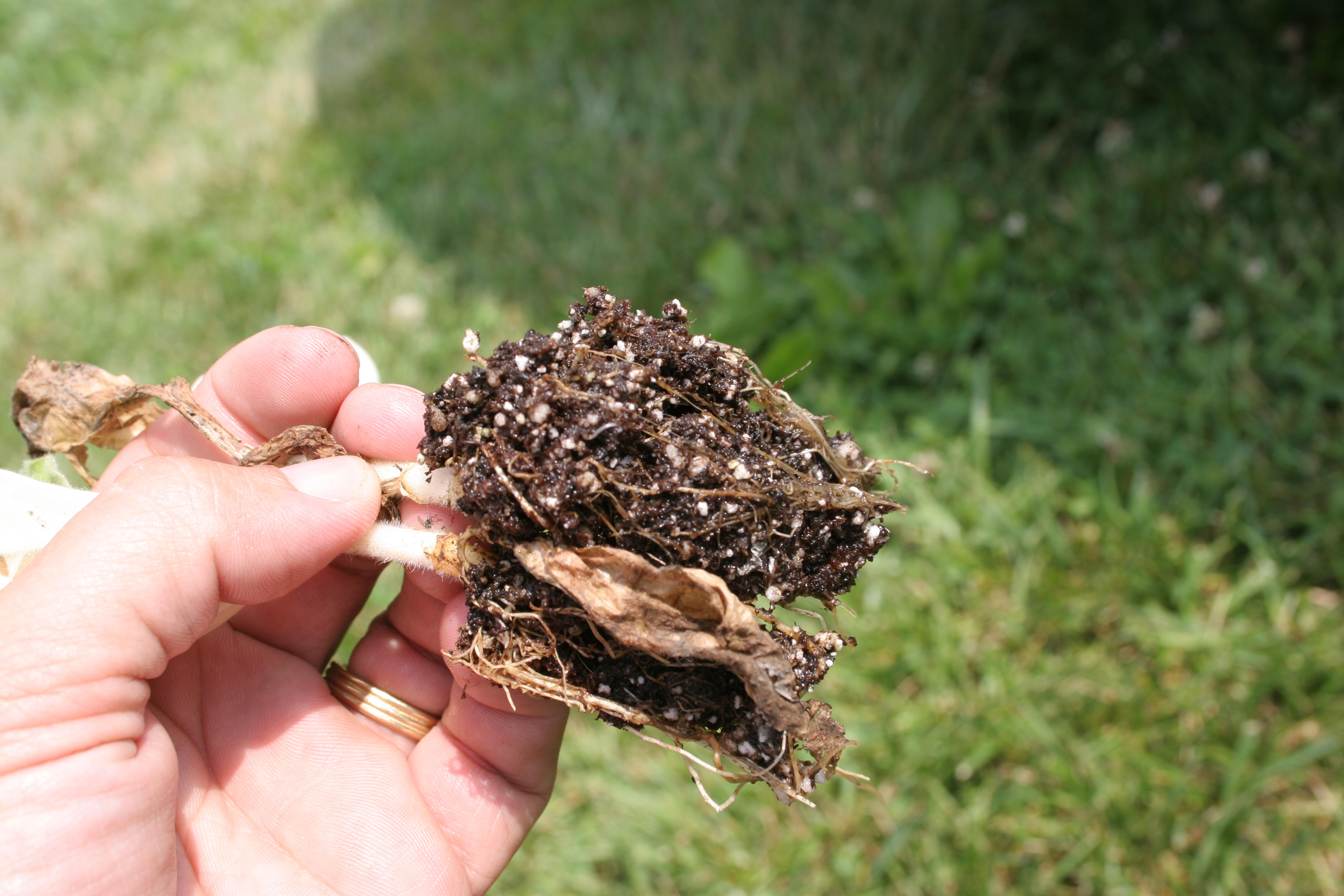Pythium Root Rot
 Pythium root rot is caused by a fungus-like organism often referred to as a water mold. Pythium infections result in stunting and yellowing of tobacco seedlings. Often infected plants are isolated in well-defined areas in float beds. (Photo: Kenneth Seebold, UK)
Pythium root rot is caused by a fungus-like organism often referred to as a water mold. Pythium infections result in stunting and yellowing of tobacco seedlings. Often infected plants are isolated in well-defined areas in float beds. (Photo: Kenneth Seebold, UK)
 If left unchecked, Pythium root rot will continue to spread and cause severe stunting and damping-off of tobacco seedlings. (Photo: Kenneth Seebold, UK)
If left unchecked, Pythium root rot will continue to spread and cause severe stunting and damping-off of tobacco seedlings. (Photo: Kenneth Seebold, UK)
 When infected with Pythium spp., roots extending into the float water are generally necrotic (brown) and limp due to decay. Root decay reduces nutrient uptake, causing the foliar symptoms shown in the previous images. This disease often starts from contaminated float trays and can quickly spread throughout a float bed. (Photo: Kenneth Seebold, UK)
When infected with Pythium spp., roots extending into the float water are generally necrotic (brown) and limp due to decay. Root decay reduces nutrient uptake, causing the foliar symptoms shown in the previous images. This disease often starts from contaminated float trays and can quickly spread throughout a float bed. (Photo: Kenneth Seebold, UK)
 Moderately affected plants may reach usable transplant size, but are likely to suffer from stress after transplanting to the field environment. In advanced stages of Pythium root rot, decay extends throughout transplant plug roots. For more information on this disease and its management, see the Plant Pathology Fact Sheet, Pythium Root Rot in Tobacco Float Systems (PPFS-AG-T-01). (Photo: Kenneth Seebold, UK)
Moderately affected plants may reach usable transplant size, but are likely to suffer from stress after transplanting to the field environment. In advanced stages of Pythium root rot, decay extends throughout transplant plug roots. For more information on this disease and its management, see the Plant Pathology Fact Sheet, Pythium Root Rot in Tobacco Float Systems (PPFS-AG-T-01). (Photo: Kenneth Seebold, UK)
